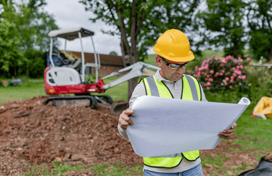8250 Old Montgomery RD
Columbia, MD 21045
United States
Contact Us
Below, you can find resources for dealing with county utilities, as well as information on the divisions of the Bureau of Utilities.
Hours of Operation: Monday–Friday, 7:30 a.m. to 5 p.m. Please call (410) 313-4900
After-Hours Emergency: Please call (410) 313-2200
Calls are radio-dispatched to service crews 24 hours a day.

Public Water & Sewer Resources
To report any persistent outages, please file a report with Tell HoCo at https://www.howardcountymd.gov/tell-hoco
Bureau Divisions
Customer Service
Here, you can find quick information and links for commonly requested topics regarding utility service and upkeep. Questions are divided by subject, and include topics such as lead in drinking water, procedures for identifying and marking utility lines, and requesting new connections to public water and sewer utilities.
Little Patuxent Water Reclamation Division
The Little Patuxent Water Reclamation Plant serves the central part of Howard County, which contains 56% of the County's population. This includes the towns of Columbia, Savage, and North Laurel. There are 820 miles of gravity and force main sewer pipe that carries wastewater to the plant.
Most of the western part of Howard County is rural. Waste from septic tanks in this area is transported to the plant by truck. The eastern portion of the County, including Ellicott City, Elkridge, and Jessup is served by the Patapsco Wastewater Treatment Plant in Baltimore City.
Maintenance and Repair Division
The Bureau of Utilities Maintenance and Repair Division consists of the Construction Maintenance and the Program Maintenance Divisions and is responsible for the maintenance and repair of Howard County's public water and sewer system that serves the eastern half of the county. Our commitment to the development, maintenance and operation of the public water system ensures the high quality of water service and fire protection that our customers demand.
For more information, visit the link below.
Pretreatment Program
As the lead agency that responds to sewage overflows, the Bureau of Utilities has taken on the challenge of educating residents on how they can and should dispose of these fats, oils and grease which are found in foods and food ingredients we use in our homes everyday: meat, cooking oil, butter, shortening, margarine, baked goods, sauces and dairy products.
What happens when you fry bacon, broil hamburgers or bake meat? When you’re finished, what remains in your cooking pan ? The answer is FOG – a real enemy of our sewer system – a substance that, when poured down your drain or into your garbage disposal, will build up over time, constrict the flow of wastewater and eventually cause sewers to back up into homes, overflow sewage into streams, rivers and the Bay.
Howard County’s Bureau of Utilities quickly responds to and resolves these backups and overflows. For more information on our Pretreatment Program, visit the link below.
The Shared Septic System Division is responsible for the operation and maintenance of the County’s 25 shared septic systems. A shared septic system is a system that serves the wastewater treatment needs of only one community and they are located outside the metropolitan district. Each system consists of a collection system that conveys raw wastewater to a central location where it is treated and disposed of in a use-in-common drainfield.
For more information on the Shared Septic System, visit the link below.
System Operation and Maintenance Division
The Bureau of Utilities System Operation and Maintenance Division is responsible for maintenance at the Little Patuxent Water Reclamation Plant, and operation and maintenance of the water distribution system and wastewater collection systems.
Tech Support Division
The Technical Support Division is responsible for providing engineering support and management of various administrative and maintenance operations for the Bureau including :
- All administrative functions
- Budgeting
- Engineering
- Water and sewer master planning
- Construction inspection
- GIS mapping
Water Meter Division
The Meter Division reads over 78,000 water accounts for billing purposes. Of those meters, 70% are installed inside a residence or commercial building; remaining meters are installed in a meter vault that is in the ground, near the property line.
For more information on the Water Meter Division, visit the link below.
Water Reuse Division
The Water Reuse Division is responsible for the operation and maintenance of the County’s reclaimed water system. Reclaimed water is wastewater that is treated to remove pollutants and pathogens that are potentially harmful to the environment or human health. Reclaimed water can be used in a variety of ways for purposes that typically do not require drinking water quality. For example, irrigation, dust control, washing aggregate, making concrete and cooling tower make-up water.
For more information on the Water Reuse Division, visit the link below.
History of the Howard County Bureau of Utilities
Prior to the formation of the Howard County Metropolitan Commission in 1943, the rural character of the county caused few water supply and sewer disposal problems. Properties, through wells, springs and with septic systems, took care of their issues on an individual basis. Except in some of the older towns where population density and the need for more water was becoming a problem, there was relatively little need of such public facilities.
The Elkridge area experience an acute water shortage in 1931 and the problem was solved by setting up a special tax district through the state for the purpose of furnishing water to that area. The Board of County Commissioners entered into an agreement with the City of Baltimore under which water mains were installed and the mains were operated, maintained and supplied by the Bureau of Water Supply of the City of Baltimore. In 1953 an agreement was negotiated with the Washing ton Suburban Sanitary Commission to supply additional water.
In 1965 an act of the Maryland state legislature incorporated the existing five sub districts into one Howard County Metropolitan District and provided the means by whereby the Commission, with its 26 members began its own maintenance and operations group. With its 16 members the Bureau of Water and Sewer group made all house connections, maintained and operated the pumping stations and treatment plants and began operations from the Church Road facility.



